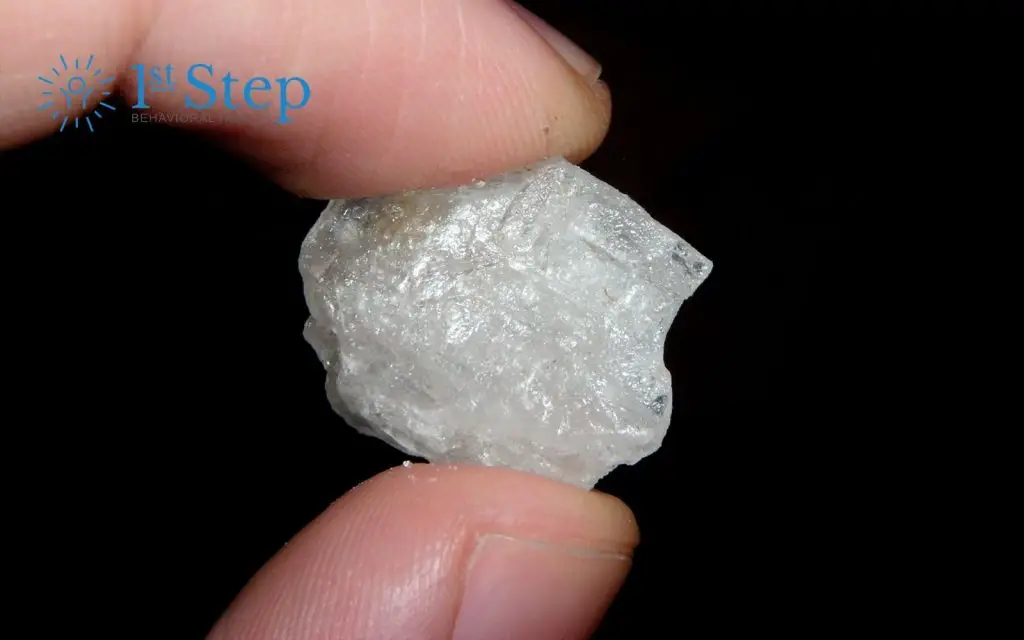Methamphetamine, also known as “meth,” is incredibly dangerous and addictive. Being able to identify a loved one’s meth addiction could potentially save their life.
Because meth can cause severe behavioral changes and psychosis, a person’s behavioral health may reveal information about meth use.
Examining the drug itself is another method of identifying meth use. In addition to laboratory testing, meth can be identified by its appearance, taste, and smell.
If someone finds meth in a loved one’s belongings, they might differentiate it from other drugs based on a few characteristics.
Types of Meth
Crystal Meth
Crystal meth is likely the most well-known form of the drug. It is also typically the strongest and purest.
Crystal meth is known by the “street names,” “ice,” “glass,” and “rock” because it resembles ice shards or pieces of broken glass. Typically, meth is in crystal form when it is smoked.
Powdered Meth
Powdered meth dissolves very easily in water or alcohol, though the powder itself can range from fine to coarse.
Depending on the additives used, powdered meth can have a wide range of colors. These consist of pink, yellow-gray, orange, brown, and white. Snorting is the most common way to consume powdered meth.
Powdered meth can also be pressed into pills and sold as recreational drugs. These can be sold as meth, ‘yaba’ (a combination of meth and caffeine), or mislabeled as other substances like MDMA.
Tablets
Doctors occasionally prescribe methamphetamine to treat ADHD or narcolepsy. This medication is Desoxyn, and it should not be used by anyone without a valid prescription.
Desoxyn, like many prescription medications, is widely abused. Using a prescription medication that was not prescribed to you will be treated by law enforcement with the same seriousness as illegal street drug possession.
Liquid Meth
Meth is typically only transformed into a liquid for transportation. To do this, the drug must dissolve in water.
Liquid meth takes on the appearance of a dark yellow liquid.
What does meth smell like?
Unfortunately, identifying the precise scent of methamphetamine is challenging. Some say it has no odor, while others claim it smells sweet and bitter. Because the drug contains various chemicals, the bitterness is typically chemical in nature.
Because acetone, ammonia, and hydrochloric acid are commonly used in meth production, it may smell like:
- Rotten eggs
- Vinegar
- Bleach
- Burning plastic
- Cat urine
- Paint thinner
- Fertilizer
If you smell scents similar to those listed above on someone you care about, they may be using meth.
Looking for other indicators may make it easier to determine if your loved one needs help.
What does meth taste like?
Meth has been described as having a bitter, chemical taste with a lingering unpleasantness that is difficult to ignore. Descriptions frequently include references to the taste of burnt plastic or metallic bitterness, which directly reflects the drug’s chemical composition. Similarly to its smell, the taste of meth is influenced by the numerous hazardous substances used in its illicit production.
Keep in mind that methamphetamine’s chemical composition can be extremely harmful and that attempting to identify it by taste could lead to poisoning or the absorption of toxic substances into your body.
If you come across a substance that you suspect to be meth, the best course of action is to contact the appropriate authorities or professionals who are trained to handle such materials safely.
Items Used to Consume Meth
An additional indicator that someone may be using meth is if paraphernalia commonly used for consuming the drug is found.
Glass Pipes
Glass pipes are one of the most apparent indicators of meth use. These pipes, also known as “bowls,” are used for smoking crystal meth, allowing the user to heat and vaporize the substance before inhaling the smoke. Although their sizes and designs can vary, they frequently have a bulbous end where the meth is inserted.
Foil or Burnt Spoons
Meth can also be ingested by “chasing the dragon,” which involves heating it on a piece of aluminum foil and then inhaling the fumes. Spoons with burn marks are also indicative of meth use because they may be used to melt meth before injecting it.
Syringes
Syringes and needles are standard equipment for meth injectors. Meth use may be indicated by the presence of these items, particularly when combined with other drug paraphernalia. Another indicator of intravenous drug use is injection marks, also known as “track marks,” on the skin.
Behavior and Physical Symptoms
In addition to the smell, taste, and paraphernalia, methamphetamine use is often accompanied by a range of erratic behaviors. These behaviors can include sudden mood swings, increased agitation, or heightened energy levels that appear unusual for the individual.
You might notice that they exhibit hyperactive behavior or are excessively talkative, often jumping from one topic to another. They may also experience extreme paranoia or anxiety, leading to bouts of suspiciousness or defensive reactions.
Another behavior to consider is the impact of meth on sleep patterns. Individuals using methamphetamine often experience severe insomnia, as the drug is a powerful stimulant that can keep them awake for extended periods.
You might observe your loved one staying up for days at a time, only to crash into a deep sleep once they finally do rest. This lack of sleep can exacerbate their erratic behavior and contribute to a decline in their overall physical and mental health.
Other physical symptoms may include noticeable weight loss, dental issues commonly referred to as “meth mouth,” and sores or skin infections resulting from obsessive skin picking.
These signs, when combined with the lingering smell of meth and the aforementioned behavioral changes, can provide a clearer picture of a potential substance use problem.
Recognizing these signs early can be crucial in addressing the issue and finding care for your loved one. If you suspect that they are using methamphetamine, it may be essential to approach the situation with care and concern, offering support while encouraging them to seek professional assistance.
The more informed you are about the signs and symptoms of meth use, the better equipped you will be to intervene effectively and compassionately.
Help is Only One Call Away
With the aid of personalized behavioral therapy, medical detox services, and active outpatient programs, meth addiction is completely curable. Do not let a loved one suffer from addiction any longer. Contact one of our trusted addiction specialists today to learn how First Step Behavioral Health can help.
References:
- United States Department of Justice: Crystal Methamphetamine Fast Facts
Jump to a Section
Call (855) 425-4846
